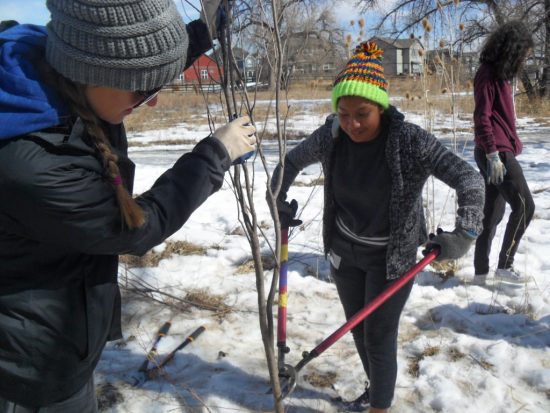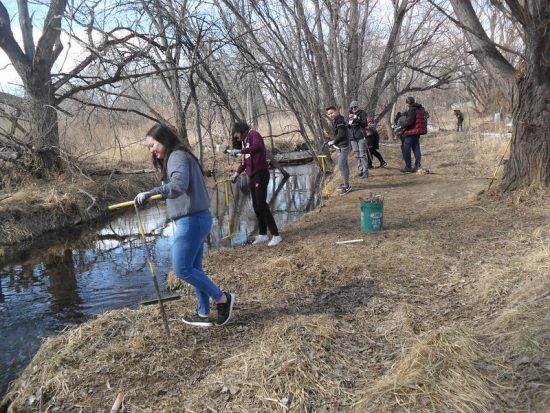On a serendipitous sunny day in February, forces aligned to restore Coal Creek from the 2013 floods. Lafayette CAP Outdoor students from Centaurus High School and Angevine Middle School worked with Wildlands Restoration Volunteers, the City of Lafayette, and Biologists from University of Colorado to plant willows to shore up the banks of the flood-damaged creek and perform some citizen science water testing. The Angevine students reported on the experience, while the photo credits go to Centaurus students and WRV photographer, Guy Turrenne.
The 2013 Flood in Coal Creek

Mason – (The flood) also caused the river to change directions and there was a lot of debris. At one point I saw a Port-a-Potty floating down. It also caused habitat destruction. It knocked down trees which hurt birds. I think coyotes might have been disrupted as well. It also flooded my friend’s basement causing human habitat destruction.
Tree Planting
E.P. – We had to use a spike & hammer to make a hole.
Tavian – If the tool could not get through the ground, we would use a mallet to hammer it down. Then we would put the willow trees in the hole and compact the hole with soil. The trees prevent erosion and it creates a biome for the animals near there.
Water Testing

Written by Centaurus CAP Instructor Erin Angel and her students
See more photos from the trip here!
CAP at Angevine Middle School and Centaurus High School is made possible in part by a grant from Great Outdoors Colorado (GOCO) through the Nature Kids/Jovenes de la Naturaleza program. Click here to learn more! Thank you to Wildlands Restoration Volunteers for supporting this program!
